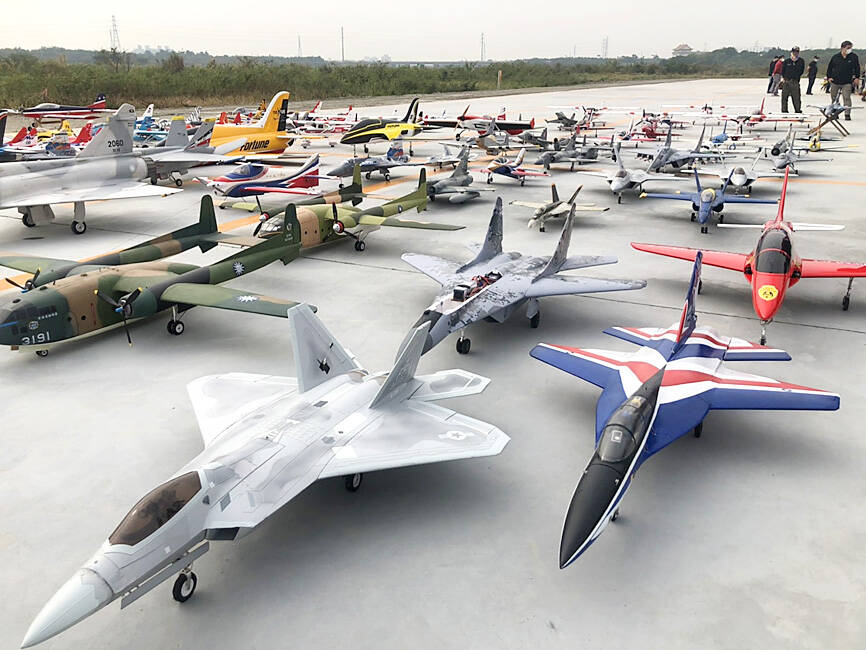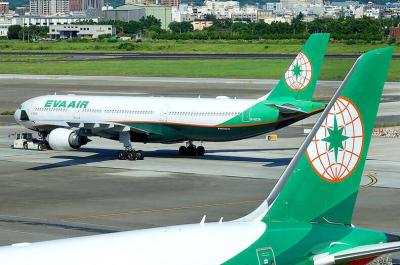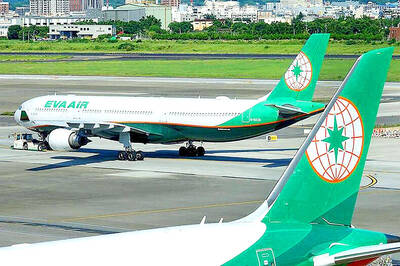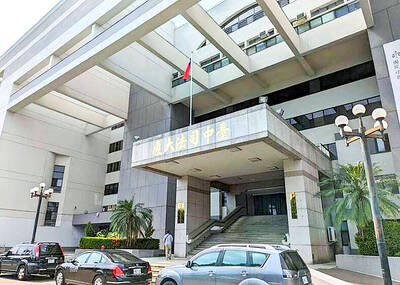All commercially sold drones would from 2026 need to be equipped with a remote identification tracking feature, the Civil Aeronautics Administration (CAA) said yesterday.
Requiring a remote ID, which provides identification and location information that can be used by other parties, has become a global norm as civilian drones have gained popularity, CAA Deputy Director-General Lin Chun-liang (林俊良) said.
Under new regulations approved by the CAA, all drones sold commercially in Taiwan would need remote IDs by Jan. 1, 2026, while those that are already in use would have a grace period for installation of the feature, Lin said.

Photo: Lo Hsin-chen, Taipei Times
Beyond helping the government monitor drones in the nation’s airspace, the remote ID function would also allow the public to use the CAA’s Drone Map app to check whether drones are registered and are flying in an authorized area, Lin said.
The CAA also plans to lower the minimum age for registering a drone from 16 to 13, in line with similar regulations set by the US Federal Aviation Administration, Lin said.
There are about 40,000 registered drones in Taiwan — of which three-quarters are licensed to individuals, and the rest to companies and other entities, the CAA said.
More than 17,000 people have drone operating licenses, CAA data show.

EVA Airways today confirmed the death of a flight attendant on Saturday upon their return to Taiwan and said an internal investigation has been launched, as criticism mounted over a social media post accusing the airline of failing to offer sufficient employee protections. According to the post, the flight attendant complained of feeling sick on board a flight, but was unable to take sick leave or access medical care. The crew member allegedly did not receive assistance from the chief purser, who failed to heed their requests for medical attention or call an ambulance once the flight landed, the post said. As sick

A drunk woman was sexually assaulted inside a crowded concourse of Taipei Railway Station on Thursday last week before a foreign tourist notified police, leading to calls for better education on bystander intervention and review of security infrastructure. The man, surnamed Chiu (邱), was taken into custody on charges of sexual assault, taking advantage of the woman’s condition and public indecency. Police discovered that Chiu was a fugitive with prior convictions for vehicle theft. He has been taken into custody and is to complete his unserved six-month sentence, police said. On Thursday last week, Chiu was seen wearing a white

EVA Airways, one of the leading international carriers in Taiwan, yesterday said that it was investigating reports that a cabin crew manager had ignored the condition of a sick flight attendant, who died on Saturday. The airline made the statement in response to a post circulating on social media that said that the flight attendant on an outbound flight was feeling sick and notified the cabin crew manager. Although the flight attendant grew increasingly ill on the return flight, the manager did not contact Medlink — a system that connects the aircraft to doctors on the ground for treatment advice during medical

The Taichung District Court yesterday confirmed its final ruling that the marriage between teenage heir Lai (賴) and a man surnamed Hsia (夏) was legally invalid, preventing Hsia from inheriting Lai’s NT$500 million (US$16.37 million) estate. The court confirmed that Hsia chose not to appeal the civil judgement after the court handed down its ruling in June, making the decision final. In the June ruling, the court said that Lai, 18, and Hsia, 26, showed “no mutual admiration before the marriage” and that their interactions were “distant and unfamiliar.” The judge concluded that the couple lacked the “true intention of